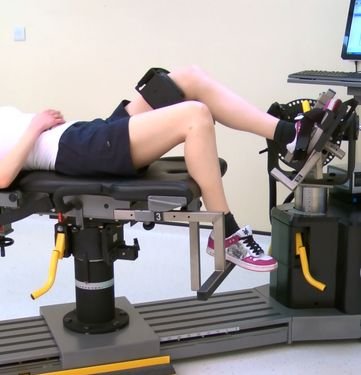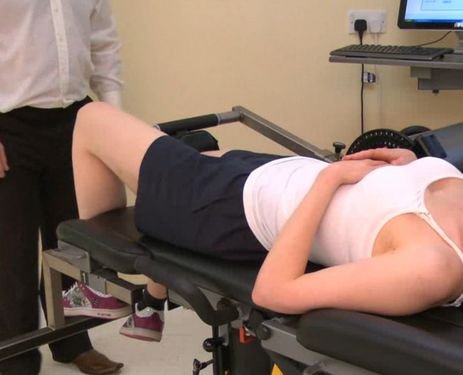Tag: setup
-

Ankle Plantar / Dorsi Flexion
Plantar and dorsi flexion are normally performed in either the supine (or modified supine / seated), prone or standing positions. The ankle poses problems not shared by the knee joint. As it is such a polyarticulating area with a wide variety of movements and allot of muscles spanning it, the ankle throws up many procedural issues,…
-

Ankle Inversion / Eversion
Inversion and Eversion are normally performed in the supine or modified supine (seated) positions. The ankle poses problems not shared by the knee joint. As it is such a polyarticulating area with a wide variety of movements and allot of muscles spanning it, the ankle throws up many procedural issues, like positioning and alignment, and issues…
-

Hip Flexion / Extension
Testing hip flexion and extension is becoming more popular. Largely because of the increase in hip arthroscopies. More research is available although it is often contradictory. Femoroacetabular Impingement (FAI): Casartelli et al.(2012) described decreased isokinetic (and isometric strength tested on a isokinetics machine) muscle strength of the hip flexors in patients with femoral acetabular impingement syndrome (FAI),…
-

Hip Abduction / Adduction
Another test rising in popularity due to FAI and falls. Femoroacetabular Impingement (FAI): Hip muscle function has been said to be altered in patients with FAI. Casartelli et al. (2012) described decreased isometric muscle strength (tested using an isokinetics machine) of the adductors and abductors compared with controls. However, Diamond et al. (2015) only found…
-

Hip Internal / External Rotation
In recent years the use of hip testing both isokinetic and isometric testing has been on the increase. The main areas the research has seemed to focus on are: Femoroacetabular Impingement (FAI)Brunner et al. 2016Diamond, Wrigley, Hinman 2015Casartelli et al1. 2014Casartelli et al2. 2012 Hip muscle function has been said to be altered in patients…
-

Forearm Pronation / Supination
There are currently no standard examination positions for pronation and supination. During these movements the shoulder is difficult to fully stabilize without using 90 degrees of shoulder abduction and even then the subject can move the shoulder somewhat the elbow is usually flexed to 90 degrees during these tests (as described by Gallager et al…
-

Wrist Pronation / Supination
There are currently no standard examination positions for pronation and supination. During these movements the shoulder is difficult to fully stabilize without using 90 degrees of shoulder abduction and even then the subject can move the shoulder somewhat the elbow is usually flexed to 90 degrees during these tests (as described by Gallager et al…
-

Wrist Flexion / Extension
Wrist movements do not originate from a single joint. The radius articulates with three of the carple bones (known collectively as the rdiocarple joint) which in turn articulate with each other and the next row of bones (known as the intercarple joints). This allows for flexion and extension (as well as radial and ulna deviation…
-

Wrist Radial / Ulna Deviation
Wrist movements do not originate from a single joint. The radius articulates with three of the carple bones (known collectively as the rdiocarple joint) which in turn articulate with each other and the next row of bones (known as the intercarple joints). This allows for radial and ulna deviation (as well as flexion / extension and the…
